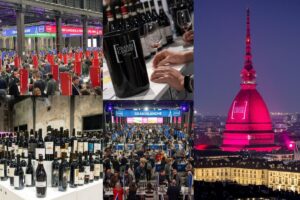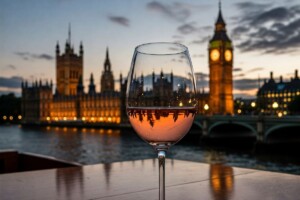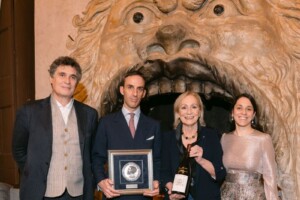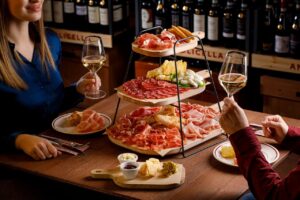“Amarone is the expression and territorial symbol of Valpolicella and the Veneto region: an innovative wine because of its history, organoleptic characteristics, indigenous grape varieties and production techniques of grape drying. Amarone is now threatened by excessive production, which does not take into account the suitable production areas and conforms to the minimum parameters of the legislation, resulting in lowering the quality threshold. It also means being subjected to trade strategies that often respond to low price logic for mass distribution channels.”
This is the premise of the Amarone Art Manifesto, the document that describes the identity and program, presented today in Milan by the association of 12 families producers of the historic Amarone wine (Allegrini, Begali, Brigaldara, Masi, Agricola Musella, Nicolis, Speri, Tedeschi, Sant’Antonio Estate, Tommasi, Venturini and Zenato).
According to Sandro Boscaini, president of the Families of Amarone Art, “The Manifesto responds to a political vision of wine we believe to be essential, based on quality, not quantity. As a matter of fact,” continued Boscaini, “for several years now, we have been witnessing the phenomenon of overproduction contrasted with lower supply prices and, indirectly, revenue for producers. In 2008, 6.75 million liters of Amarone were sold, while 9 million liters were sold last year. In terms of bottles, this means that we have gone from 9 million to 12 million within just two years (2006-2007)”. Turnover instead is quite different, “instead of increasing, explained Boscaini, ”the trend is the opposite: compared to a 33% more in volume, value has lost 16% - a decline from 81 million euros to 68 million euros”. The trend is negative also for the price of grapes, which has dropped from 4 euros a kilo in 2007 to 1.50 euros a kilo this year. Production costs instead have risen.
The surge in Amarone production is a scenario that is troubling the leading historic families of Valpolicella and forcing them to “sit tight on top of the hill” to defend the quality and excellence of one of the three best known Italian red wines in the world. For several years now they have stopped production at 2 million bottles a year. “On the eve of entering the market with 16 million bottles of the 2008 production, we wonder what other negative price record there will be”, asks the president Boscaini, adding, “at this rate it is more than likely that consumers will be confused not knowing why bottles with the same name have greatly different prices and a quality at the limit of legislative parameters”. Two years ago, the average wholesale price per liter of Amarone was 12 euros, while last year it was only 7.50 euros.
Besides the Manifesto, the Families of Amarone Art (2000 years of history in wine) have also created a hologram badge to characterize their wine and reaffirm the strength of uncompromising quality and price.
The Manifesto has been drawn up in 7 points and signed by all the producers. It marks the difference between the new low cost trend and the ‘rare and expensive’ product that has made the reputation and history of the vineyards of Amarone famous. “With these two measures, the Manifesto and the Hologram.” Sandro Boscaini concluded, “we intend to raise awareness while calling forward all the operators in the world production of Amarone. Together we can share production and price policies that do not degrade the product and its prestige”.
(Source of data: Amarone Art Families Association)
Amarone is the expression and territorial symbol of Valpolicella and the Veneto region.
Amarone wine is exceptional because of its history, organoleptic characteristics, indigenous varieties, and production techniques of drying grapes.
Amarone is now threatened by excessive production, which does not consider the suitable areas but instead conforms to the minimum parameters of the law, resulting in a lower quality threshold.
Amarone is now threatened by commercial actions that often respond to low price logic in mass distribution channels.
Amarone Art Families proclaim and promote the “Manifesto of Amarone Art”:
Amarone Art is the fruit of the knowledge and know-how of historic and dedicated producers, with deep roots in tradition and territory.
Amarone is produced with artisan sensitivity and implies selection of suitable areas for vineyards, quality viticulture, careful selection of grapes, long drying and aging in noble wood. Amarone Art is excellence and its quality should be recognized at an appropriate price, preserving its prestige on international markets.
Amarone Art is the world ambassador of Made in Italy where its wine is recognized as unique for quality, identity and originality.
Amarone Art Families preserve the tradition of this great wine, drawing on their wealth of knowledge consolidated over time, determining its success with a commitment to quality and innovation as well as testimony on the markets.
Amarone Art Families adopt strict rules to maintain the high noble characteristics of the product.
Amarone Art Families put a unique and distinctive hologram on all their bottles of Amarone, to make them recognizable and ensure authenticity and high quality.
The Amarone Art Families are: Allegrini, Begali, Brigaldara, Masi Agricola, Musella, Nicolis, Speri, Tedeschi, Sant’Antonio Estate, Tommasi, Venturini and Zenato.
Focus - The numbers of the 12 “Amarone Art Families”<
Area planted with Amarone - 576.91 hectares
Sales since 2009 and production:
Total production 119 million euros
Only Amarone - 29 million euro
Bottles of Amarone produced - 2 million
Export - best performances
Canada - 264,000 bottles for 3.5 million euro
Switzerland - 231,000 bottles for 3.5 million euro
U.S.A. – 206.000 bottles for 3 million euro
Source: Amarone Art Families, Internal inquiry
Copyright © 2000/2025
Contatti: info@winenews.it
Seguici anche su Twitter: @WineNewsIt
Seguici anche su Facebook: @winenewsit
Questo articolo è tratto dall'archivio di WineNews - Tutti i diritti riservati - Copyright © 2000/2025








































































































































































































